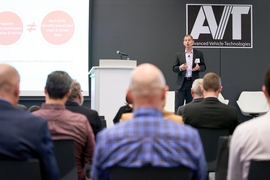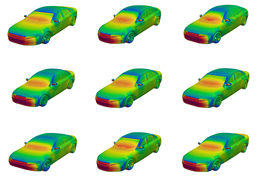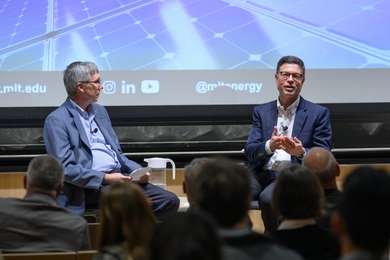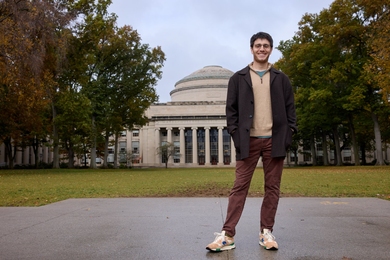A decade-plus collaboration between MIT’s AgeLab and the Toyota Motor Corporation is recognized as a key contributor to advancements in automotive safety and human-machine interaction. Through the AgeLab at the MIT Center for Transportation and Logistics (CTL), researchers have collected and analyzed vast real-world driving datasets that have helped inform Toyota’s vehicle design and safety systems.
Toyota recently marked the completion of its 100th project through the Collaborative Safety Research Center (CSRC), celebrating MIT’s role in shaping technologies that enhance driver-assistance features and continue to forge the path for automated mobility. A key foundation for the 100th project is CSRC’s ongoing support for MIT CTL’s Advanced Vehicle Technology (AVT) Consortium.
Real-world data, real-world impact
“AVT was conceptualized over a decade ago as an academic-industry partnership to promote shared investment in real-world, naturalistic data collection, analysis, and collaboration — efforts aimed at advancing safer, more convenient, and more comfortable automobility,” says Bryan Reimer, founder and co-director of AVT. “Since its founding, AVT has drawn together over 25 organizations — including vehicle manufacturers, suppliers, insurers, and consumer research groups — to invest in understanding how automotive technologies function, how they influence driver behavior, and where further innovation is needed. This work has enabled stakeholders like Toyota to make more-informed decisions in product development and deployment.”
“CSRC’s 100th project marks a significant milestone in our collaboration,” Reimer adds. “We deeply value CSRC’s sustained investment, and commend the organization’s commitment to global industry impact and the open dissemination of research to advance societal benefit.”
“Toyota, through its Collaborative Safety Research Center, is proud to be a founding member of the AVT Consortium,” says Jason Hallman, senior manager of Toyota CSRC. “Since 2011, CSRC has collaborated with researchers such as AVT and MIT AgeLab on projects that help inform future products and policy, and to promote a future safe mobility society for all. The AVT specifically has helped us to study the real-world use of several vehicle technologies now available.”
Among these technologies are lane-centering assistance and adaptive cruise control — widely-used technologies that benefit from an understanding of how drivers interact with automation. “AVT uniquely combines vehicle and driver data to help inform future products and highlight the interplay between the performance of these features and the drivers using them,” says Josh Domeyer, principal scientist at CSRC.
Influencing global standards and Olympic-scale innovation
Insights from MIT’s pedestrian-driver interaction research with CSRC also helped shape Toyota’s automated vehicle communication systems. “These data helped develop our foundational understanding that drivers and pedestrians use their movements to communicate during routine traffic encounters,” said Domeyer. “This concept informed the deployment of Toyota’s e-Palette at the Tokyo Olympics, and it has been captured as a best practice in an ISO standard for automated driving system communication.”
The AVT Consortium's naturalistic driving datasets continue to serve as a foundation for behavioral safety strategies. From identifying moments of distraction to understanding how drivers multitask behind the wheel, the work is guiding subtle but impactful design considerations.
“By studying the natural behaviors of drivers and their contexts in the AVT datasets, we hope to identify new ways to encourage safe habits that align with customer preferences,” Domeyer says. “These can include subtle nudges, or modifications to existing vehicle features, or even communication and education partnerships outside of Toyota that reinforce these safe driving habits.”
Professor Yossi Sheffi, director of MIT CTL, comments, “This partnership exemplifies the impact of MIT collaborative research on industry to make real, practical innovation possible.”
A model for industry-academic collaboration
Founded in 2015, the AVT Consortium brings together automotive manufacturers, suppliers, and insurers to accelerate research in driver behavior, safety, and the transition toward automated systems. The consortium’s interdisciplinary approach — integrating engineering, human factors, and data science — has helped generate one of the world’s most unique and actionable real-world driving datasets.
As Toyota celebrates its research milestone, MIT reflects on a partnership that exemplifies the power of industry-academic collaboration to shape safer, smarter mobility.









